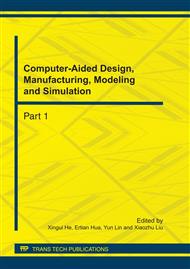p.652
p.657
p.662
p.668
p.674
p.679
p.684
p.688
p.697
Study on Dynamic Mechanical Response of TC21 Alloy
Abstract:
Some results of an experimental study on high strain rate deformation of TC21 alloy are discussed in this paper. Cylindrical specimens of the TC21 alloys both in binary morphology and solution and aging morphology were subjected to high strain rate deformation by direct impact using a Split Hopkinson Pressure Bar. The deformation process is dominated by both thermal softening effect and strain hardening effect under high strain rate loading. Thus the flow stress doesn’t increase with strain rate at the strain hardening stage, while the increase is obvious under qusi-static compression. Under high strain rate, the dynamic flow stress is higher than that under quasi-static and dynamic flow stress increase with the increase of the strain rate, which indicates the strain rate hardening effect is great in TC21 alloy. The microstructure affects the dynamic mechanical properties of TC21 titanium alloy obviously. Under high strain rate, the solution and aging morphology has higher dynamic flow stress while the binary morphology has better plasticity and less prone to be instability under high strain rate condition. Shear bands were found both in the solution and aging morphology and the binary morphology.
Info:
Periodical:
Pages:
674-678
Citation:
Online since:
August 2011
Authors:
Keywords:
Price:
Сopyright:
© 2011 Trans Tech Publications Ltd. All Rights Reserved
Share:
Citation:


